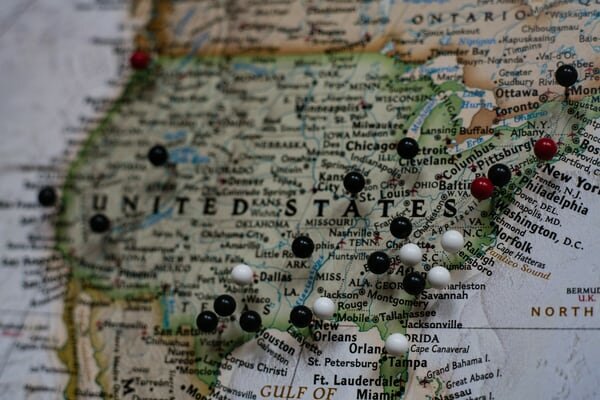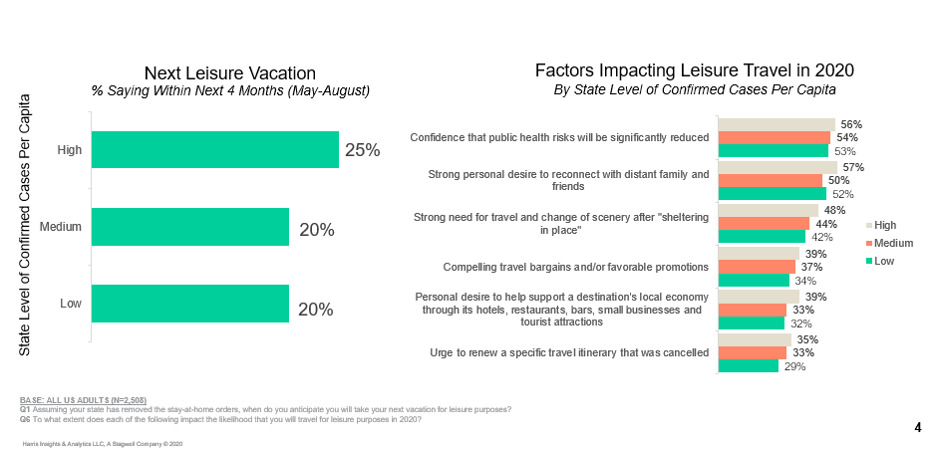Brief • 3 min Read

As sheltering in place orders have extended, pent up demand for major purchases, such as vacations and traveling, have only been increasing over time (24% planning vacation/travel once things return to normal in Wave 5 of our COVID Tracker – March 30; 29% Wave 11 – May 10). This trend is even further compounded by the severity of the COVID-19 outbreak. Residents of states with the highest level of confirmed cases per capita are the most likely to travel within the next 4 months (25% vs. 20% in the medium and low states). They have a strong need to connect with family and friends (57%) and have a change of scenery (48%) as well as the desire to support a destination’s local economy (39%).

These individuals are most comfortable with the prospect of traveling domestically (60%), renting a car (53%), and staying in a hotel (50%) more so than flying (36%) or taking Uber/Lyft/cab (37%). Pressure from family and friends to avoid non-essential travel could derail their plans (26% say it might alter or block their 2020 leisure travel) even more so than those in less impacted states (20% among low or medium states).
Key takeaway:
The longer and more severe the impact of COVID, the greater the demand to get back to normal activities such as travel.
Survey Methodology:
This survey was conducted online within the United States by The Harris Poll from May 6 – 8, 2020 among 2,508 adults ages 18 and older. This online survey is not based on a probability sample and therefore no estimate of theoretical sampling error can be calculated.
For this analysis, we classified states based on the severity of the COVID-19 outbreak based on per capital confirmed cases as of 4/28. States were grouped as follows:
- Low (n=572) – South Carolina, Idaho, Wisconsin, Arkansas, Arizona, Kentucky, North Carolina, Texas, Oklahoma, Maine, Minnesota, Wyoming, West Virginia, Oregon, Alaska, or Hawaii
- Medium (n=904) – Iowa, Washington, Nebraska, Virginia, Nevada, Florida, Tennessee, New Hampshire, Ohio, Vermont, Alabama, New Mexico, Utah, North Dakota, Kansas, Missouri, or California
- High (n=1015) – New York, New Jersey, Massachusetts, Rhode Island, Connecticut, Louisiana, Delaware, Michigan, Illinois, Pennsylvania, Maryland, South Dakota, Indiana, Colorado, Georgia, or Mississippi
Subscribe for more Insights
Subscribe to our newsletter for the latest trends in business, politics, culture, and more.
Related Content








